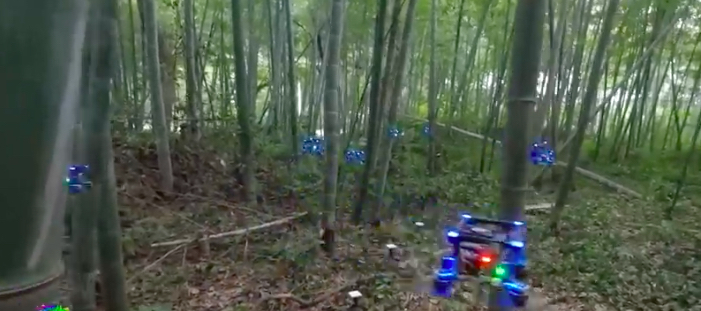May 7 to 22 is Science Odyssey, a celebration of all things science! OWLconnected is recognizing this two-week event with lots of science content, as well as with an amazing contest, presented by our friends at the Natural Sciences and Engineering Research Council of Canada (NSERC). Details are at the end of this post—be sure to enter!
No collisions, please!
Autonomous (self-piloting) drones are one of those inventions that have been a real gamechanger.
Cheaper and simpler to use than helicopters, drones can map out a massive area from above quickly. This is valuable for surveying (defining a landscape before construction), search-and-rescue, fighting forest fires, and so much more.
And where one drone is great, several can be even better. Different drones can focus on different aspects of an area—something that is especially helpful during a natural disaster where many people need help and the situation is chaotic.
But there's a small problem. How do you stop the drones from hitting things? Or each other?
Now a new test in China is proving that an algorithm (problem-solving program) can be written that allows a flock of drones to fly through even a densely-packed bamboo forest without any accidents.
Let the drone swarm take flight!
Working together at staying apart
This experiment—run by scientists at Zhejiang University—featured ten identical drones. They were each about the size of an adult's palm and were equipped with depth cameras (to understand how far away objects were), altitude sensors (to tell how high or low they were), and a computer.
The computer uses an algorithm that does more than prevent the drones from colliding with objects. It also allowed the individual drones within the swarm to coordinate as a group.
In other words, the collective could work together to achieve a goal as efficiently as possible. And unlike your phone or car, it does not use GPS (satellites) to find its way around.
Watch a video of the swarm in action below. You'll probably think you're watching a scene from a new Marvel movie—but it's real life!
Contest alert
Don't forget to enter the Science Odyssey Contest! CLICK HERE TO ENTER.

 Look at them go! (Screenshot YouTube/New Scientists)
Look at them go! (Screenshot YouTube/New Scientists)









